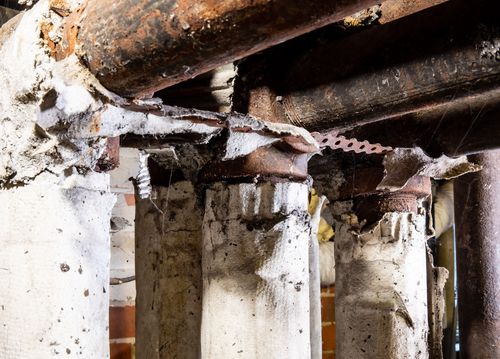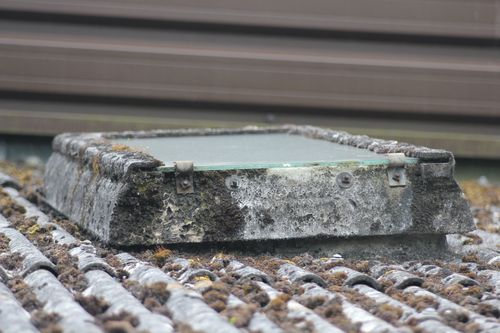
Download the full report: The Health and Safety Executive’s approach to asbestos management
The UK Asbestos Training Association (UKATA) was invited to attend as a witness to the recent UK Parliament, Work and Pensions Committee on “The Health and Safety Executive’s approach to asbestos management”. UKATA Chair, Graham O’Mahony gave evidence at one of the hearings and the subsequent report was published on 21 April 2022 with several recommendations to HSE.
One recommendation which poses huge implications for the asbestos industry is to ‘remove asbestos from all non-domestic buildings within 40 years'. This poses many challenges and further questions.
The challenge is the cost to businesses. With many rebuilding their organisations coming out of the pandemic, which could take many years, and the current cost to businesses increasing, it is well acknowledged that asbestos removal poses a risk, albeit low when undertaken correctly. However, with the cost of asbestos removal, some may decide to take this work on themselves without the correct knowledge and skills, thus increasing the risk. Another thing to consider is where is all the hazardous waste going to go? Currently, it is deposited in landfill but with a huge increase in removal, these landfill sites will become full, and we have other environmental impacts to consider.
Asbestos removal, other than it removes the hazard, doesn’t save businesses money and in some cases, they are paying twice as much, one for the removal and then the reinstatement costs, adding to the costs to the business owner.
The HSE approach has always been to leave asbestos in place if it is in good condition and unlikely to be disturbed, which may need to be a factor in the decision to remove asbestos within 40 years.
The committee also recommended the implementation of a ‘central digital register for non-domestic buildings to highlight its location and type’. One of the key roles in effective asbestos management has always been to share the information with all those that need to know the location of the asbestos containing materials (ACMs). With this ideology, it ensures all those that are likely to come into contact with asbestos will be informed and instructed as to its location and condition. This will assist in their work assessments with the ultimate objective in preventing exposure to asbestos being met.

UKATA has considered this recommendation but it would need to be adequately controlled, ensuring only the correct people can access such data and be used to prevent asbestos disturbance. However, caution would need to be considered with access by members of the public, as they may not be aware of the risk of asbestos and are un-trained and often ill-informed about the risk of asbestos, especially when it is being adequately managed in a managed environment, which could raise unnecessary concerns and fears of those accessing non-domestic buildings, especially public buildings.
The recommendation for more ‘sustained increase in inspection and enforcement’, UKATA believe this is required. With Government and DWP ensuring that it provides ‘adequate funding’, this can only result in more inspections and identification of non-compliance with all aspects of the Control of Asbestos Regulations 2012.
HSE have actively inspected licensed asbestos removal contractors for many years. However, with an increased programme, HSE could focus on areas such as Duty Holders, ensuring the duty to manage is being complied with and duty holders are actively managing asbestos, rather than just ensuring they have an asbestos survey. Many believe this meets the requirement, falling short of compliance, with no up to date asbestos register, no active and utilised action plan and more importantly no communication plan.
From increased inspections, HSE would be better placed to assess the competency of the duty holders and ‘whether it needs to specify minimum knowledge, training or other requirements for people performing this critical role.’ In 2006, HSE released the ACoP L143, and specified the minimum training for trade operatives and others likely to come into contact with asbestos during their day to day work activities would need to have, as a minimum, asbestos awareness training. This was a game changer for the construction sector. All that are employed provided with the basic asbestos awareness, informing them as to the location of ACMs and what to do in the event of accidental disturbance, with an ultimate aim to prevent their exposure and prevent others from becoming exposed to asbestos. This additional requirement had a huge positive effect on the construction sector, as prior to this, many were not aware of what asbestos was, the dangers of the material and where it could be found in premises. With this increased knowledge, workers were asking the correct questions and identifying asbestos, or what they presumed to be asbestos, before they disturbed the fabric of the building, thus resulting in a reduction of exposure to asbestos across the sector.

Unfortunately, there was no minimum standard of information, instruction, and training for duty holders. Because of this lack of standard and the need for a specific course for duty holders and appointed persons, UKATA developed the UKATA Duty to Manage – Appointed Person (DTMAP) three day training course which covers in detail the duties required to actively manage asbestos within premises. Since its launch in 2018, the DTMAP has been an enormous success and the uptake for this training continues to increase. To date over 1,000 delegates have attended the course and obtained their certificate of training, demonstrating that they have the skills and knowledge to successfully manage asbestos and ensure compliance with the control of asbestos regulations 2012, Regulation 4. The feedback from all the delegates has been hugely positive, commenting that they have gained so much knowledge to implement in their day to day work to ensure they met the requirements of the regulations.
One of the most successful campaigns that the HSE launched was the “Hidden Killer Campaign” that strived to make workers aware of the dangers of asbestos and that it wasn’t readily visible, and their disturbance of asbestos could cause health problems in the future. The recommendation that the HSE should commit to investing more in sustained campaigning work, this is very much supported by UKATA. Over the past 14 years, UKATA has supported and promoted a number of HSE campaigns and will continue to support any future campaigns through its own platforms and media channels to its nearly 200 members and 10,000 website visitors every month.
There are thousands of asbestos surveys undertaken in the UK every day, the majority of these are undertaken by accredited organisations that have met a strict quality and technical standard set down in ISO 17020 and HSG264. However, there are many asbestos surveys that are undertaken by organisations and individuals that hold no accreditation and do not meet this quality and technical standard. For many years this standard has not been a mandatory requirement, unlike the clearance testing following on from asbestos removal works, any organisation undertaking the certificate of reoccupation are required to hold accreditation in the UK.

With the recommendation that the HSE ‘makes it mandatory for all people conducting asbestos surveys to be accredited’, this is a huge leap forward in ensuring that all organisations or individuals meet the quality standards that have been in place for many years. This would ensure that the quality of surveys and inspections would increase and reduce the likelihood of missed asbestos containing materials, which inevitably will have an adverse increase in exposure and spread of asbestos. UKATA fully supports this recommendation to ensure quality surveys are provided to duty holders to effectively manage their asbestos.
One final recommendation that UKATA has considered is ‘how it could consolidate, tighten, and simplify the current categorisation of asbestos works'. UKATA has developed, enhanced and promoted quality and accurate training delivery in the UK for over 14 years. All off its members are fully assessed, verified, audited and work within the UKATA Competency Framework and as such, are fully conversant in the understanding and delivery of clear and concise knowledge of the regulations, ensuring that the category of asbestos works is made clear to its delegates, so do not see this as requiring simplification.
However, the area of concern that UKATA Chair, Graham O’Mahony stated while providing evidence was ‘that the addition of a third category of asbestos material (notifiable non-licensed work) in the 2012 asbestos regulations, prompted by European Union requirements, had “confused things even more”. UKATA would like to see this category of work removed and revert to the two categories which were easier to understand pre 2012, that being licensable works and non-licensable works.
Within the final report there were many recommendations, which UKATA has considered. However, the aforementioned comments warranted a response. UKATA, having provided evidence at this hearing, felt this was an opportunity to provide the view of the association, its members, directors and to support the findings and recommendations. UKATA will continue to work closely with the HSE going forward as we have done so in the past.
Published on Monday 6th June 2022

